KNSL Manual Alphabet and Number System
The manual alphabet of KNSL is used to spell Kelenala words that don't occur in KNSL, or to spell names of people and places named in Kelenala. While it can be used to spell any word of Kelenala, that's not the purpose of a manual alphabet. In ASL, for example, it's estimated that fingerspelling is used only about 5% of the time, 95% of the signing being done with ASL signs (both manual and non). Nevertheless, in order to communicate with the hearing world, most (if not all
Since Kelenala simply uses the roman alphabet (its intent is to be a language that's used today, not a language with any kind of backstory, imagined or otherwise), I borrowed many of the handshapes from the ASL manual alphabet for KNSL. I changed a couple of the letters that annoy me, though, and added a wholly different number system. First I'll introduce the manual alphabet of KNSL.
The Manual Alphabet of KNSL
The manual alphabet of KNSL is, as I said, mostly borrowed from ASL, and is used primarily to spell out spoken names and words of Kelenala that don't occur in KNSL.
When fingerspelling names or words of Kelenala, a special convention is used. Kelenala words have syllables that are maximally CVC. As such, if you're right handed, the way you sign a word like Lisayma, "April", you fingerspell each syllable from left to right, and from top to bottom. So, visually, it would look like this:
| L | I | |
| S | A | Y |
| M | A |
To fingerspell multiple words in a row, you start back at the top. Again, right handed signers sign syllables from left to right, and left handed signers sign syllables from right to left.
It's also used for locutionary purposes. In order to pantomime oral language, direct fingerspelling of Kelenala is used. Rather than fingerspelling words in the ordinary way, though, all words are fingerspelled starting at the mouth and moving outwards continuously, as an endless stream of speech.
Now, without further ado, here is the manual alphabet of KNSL, presented in Kelenala alphabetical order. Note when looking at the pictures that this is how I made them:
- I took a picture of my right hand making the shape with my camera phone.
- I loaded the picture onto my computer.
- Using Graphic Converter, I trimmed the images, and changed them to 4 color images.
- I replaced the black in the images with another color
- I copied them and pasted them into a painting document in AppleWorks.
- I outlined each image by hand (using a mouse) with the little black paintbrush tool (which was VERY difficult).
- I copied it and ported it back over to Graphic Converter.
- Using the "find and replace" function, I removed all colors but black.
- I shrunk each image down (which didn't work well).
- Finally, I inverted the color of the images and made the black transparent.
It was a long and ridiculous process I care not to repeat. As a result, the images may be of poor quality. That's just life. Additionally, you may notice that my thumb may be skinnier, and have more joints than yours. This is because it is and does. Nevertheless, I think the images should still give you the general gist of how they work.
Below I've given the images, the letters they correspond to, and, in brackets right beside each letter, the SLIPA transcription of each handshape (in most cases, the two are identical). That should give you enough of an idea of how to make each handshape.
[Note: For a .gif of the whole alphabet and number system, click here. There's also a somewhat nicer, somewhat smaller .pdf version that can be downloaded by clicking here.]
 |
 |
 |
 |
 |
| A [A] | P [F] | T [T] | K [K] | E [E] |
 |
 |
 |
 |
 |
| M [M] | N [N] | I [I] | L [L] | O [O] |
 |
 |
 |
 |
 |
| S [S] | H [Ŷ] | U [U] | W [W] | Y [Y] |
Those familiar with ASL's manual alphabet will notice that it's identical to the alphabet above, save two letters: P and H. These letters in ASL are like other letters with a change in how far the wrist is bent. For example, P in ASL is simply K with the wrist bent downwards. I replaced it with the ASL letter for F, since the sound [f] is close to [p] (both voiceless labial obstruents), and the sound [f] doesn't occur in Kelenala. The letter H really bugs me in ASL (as does G). The reason is that you kind of have to bend your wrist to the left while, essentially, signing the letter N. If you're not careful, the two will look identical in fast fingerspelling. For that reason, I used the common international letter for H, commonly called bull's horns, or cow horns, or some variant thereof.
A couple other notes for those familiar ASL's manual alphabet: The letter E is a flattened palm with bent fingers. The thumb need not (and, in fact, should not) touch the bent fingers (it's not in the picture; that's just an illusion). Also, for both M and N, the fingers stick straight out, and should not be bent.
That's pretty much it for the alphabet. Now we can move on to the number system.
The Number System of KNSL
The number system of KNSL is very important. This is because person on verbs and pronouns are indicated by using numbers. For example, first person is simply the number 1; second person the number 2; and third person numbers 3 through 9 (depending on how many there are). The number system is pretty much my own creation, based on a method I devised for counting that seemed like it might be intuitive to someone possibly. Not me. But that's another story.
The number zero through nine are pictured below. The same disclaimer for these images applies as that which applied to those above. Again, the transcription is given in brackets to the right. Some of the handshapes have strange notations, but by looking at the images, it should be clear how the system progresses naturally:
 |
 |
 |
 |
 |
| 0 [Ë] | 1 [Ï] | 2 [Ḋ] | 3 [Ḟ] | 4 [4] |
 |
 |
 |
 |
 |
| 5 [5] | 6 [F] | 7 [8] | 8 [7] | 9 [6] |
Thumb position is extremely important for this number system. Note the handshapes for three and six differ only in whether or not the thumb is covered by or touches the tip of the index finger (or, in the case of nine and W, whether the thumb and pinky touch or not). Also note that zero and A and one and I differ only in whether the thumb is outside of or inside the fingers. Also, while we're noting things, the handshape for six and P is identical. Finally, those familiar with ASL's manual alphabet will notice that numbers six through nine are somewhat backwards. Nevertheless, the system works, and makes sense with the numbers that precede six, so hopefully it won't be too hard to memorize.
For numbers greater than nine, movements are added to these handshapes. The movements are as follows (using one as an example):
- [1] = one
- [1]ä = ten
- [1]ä[1] = eleven
- [1]c = one hundred
- [1]c[1] = one hundred and one
- [1]c[1]ä = one hundred and ten
- [1]c[1]ä[1] = one hundred and eleven
- [1]w = one thousand
- [1]ä[1]w = ten thousand
- [1]c[1]w = one hundred thousand
- [1]v = one million
- [1]ä[1]v = ten million
- [1]c[1]v = one hundred million
- [1]f = one billion
- [1]ä[1]f = ten billion
- [1]c[1]f = one hundred billion
[Note: Refer to the phonology section for the definition of the diacritics used above.]
If you need a number higher than a billion (say, to talk about the national debt), then I say just put a T after the first number.
Conclusion
It's nice to finally have another KNSL page up. It's also good to have something visual so you can actually take a look at at least some of the handshapes of KNSL. Hopefully there will be more pages to follow, but who knows? With the the national debt where it is, all those nations may call in their debts at once, and the US may become a nation of prisoners over night. Wouldn't that be a hoot?
